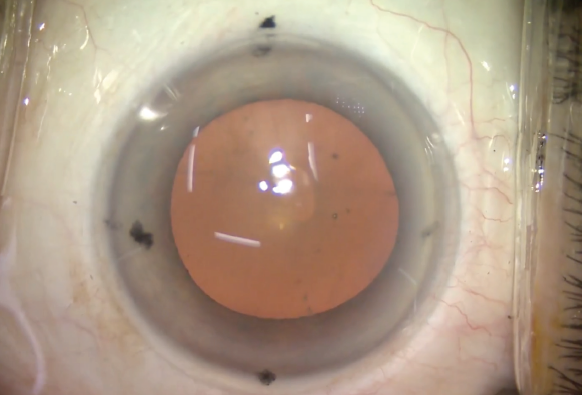
Toric IOLs allow us to surgically treat corneal astigmatism at the time of cataract surgery, thereby providing our patients with better vision without spectacles. The key is to choose a toric IOL that is matched to the eye and aligned in an appropriate manner.
In the patient’s preoperative evaluation before cataract surgery, the surgeon must determine the total corneal astigmatism. Corneal topography, tomography, and keratometry (K) are all helpful and will hopefully provide readings that are quite similar. Of these, notably, only corneal tomography allows direct measurement of the posterior corneal surface. When the degree of total corneal astigmatism is determined, we must also identify the steep and flat axes. We want the corneal astigmatism to be regular, symmetric, and stable.
The information in the following three paragraphs is the most important part of my philosophy.
The phaco incision that we create also affects the total astigmatism, so we must factor that change into our calculations. Remember that astigmatism is a vector, which means it has both a magnitude and a direction. With our phaco incision we affect the magnitude, but we can minimize the change in direction, or axis.
Imagine an airplane flying with a direct headwind or a perfectly aligned tailwind. The wind will either speed the plane up (with a tailwind) or slow it down (with a headwind), but the plane will not be blown away from its intended direction. If a crosswind hits the plane at an angle, then both the speed and direction of the plane will change.
This principle also applies to astigmatism: If our phaco incision is on the steep axis or the flat axis, then the total astigmatism will either increase (if the incision is on the flat axis) or decrease (if the incision is on the steep axis), but the direction (axis) of the astigmatism will not change. This is why I like to make my phaco incision on the steep axis in cataract surgery, if possible.
Finally, this did not come up in the list of questions I answered in the Table (page 82), but using paired full-thickness phaco incisions can correct astigmatism quite easily. Links to articles that share more of my tips and tricks for astigmatism management can be found in the accompanying sidebar, Further Resources below.
Further Resources
https://cataractcoach.com/2018/12/06/complete-toric-iol-case-from-marking-to-alignment/
https://cataractcoach.com/2018/07/05/step-by-step-technique-for-toric-iols/
https://cataractcoach.com/2018/11/02/shifting-the-phaco-incision-to-treat-astigmatism/
https://cataractcoach.com/2018/08/28/basics-of-limbal-relaxing-incisions-lris/
https://cataractcoach.com/2018/06/06/phaco-incisions-can-improve-or-worsen-astigmatism/
https://cataractcoach.com/2018/05/21/on-axis-paired-incisions-for-astigmatism/
CASE EXAMPLE
A patient presented with the following K readings and refraction:
- K: 43.00 @ 108 / 45.00 @ 018 (average K = 44.00 D, 2.00 D of corneal astigmatism); and
- Manifest refraction: +0.50 +1.75 x 020º = 20/60 BCVA (20/100 UCVA).

Figure. Black dots mark the cardinal meridians.
The four black dots at the limbus (Figure) are intended to mark the cardinal meridians (0º, 90º, 180º, and 270º). The Mendez Degree Gauge (multiple vendors) is then used to find a best fit for these marks. The result is very close, but not perfectly exact, which is acceptable because toric IOLs come in 0.50-D steps for both spherical and toric power. We can also use intraoperative biometry to measure the toric IOL position and the net refractive result and then adjust the IOL position as needed.
After surgery, the results in this case were:
- K: 43.25 @ 108 / 44.75 @ 018 (average K = 44.00 D, 1.50 D of corneal astigmatism); and
- Manifest refraction: -0.25 +0.25 x 020º = 20/20 BCVA (20/20 UCVA).
Find out my indications for toric lenses in the Table. Click here!




